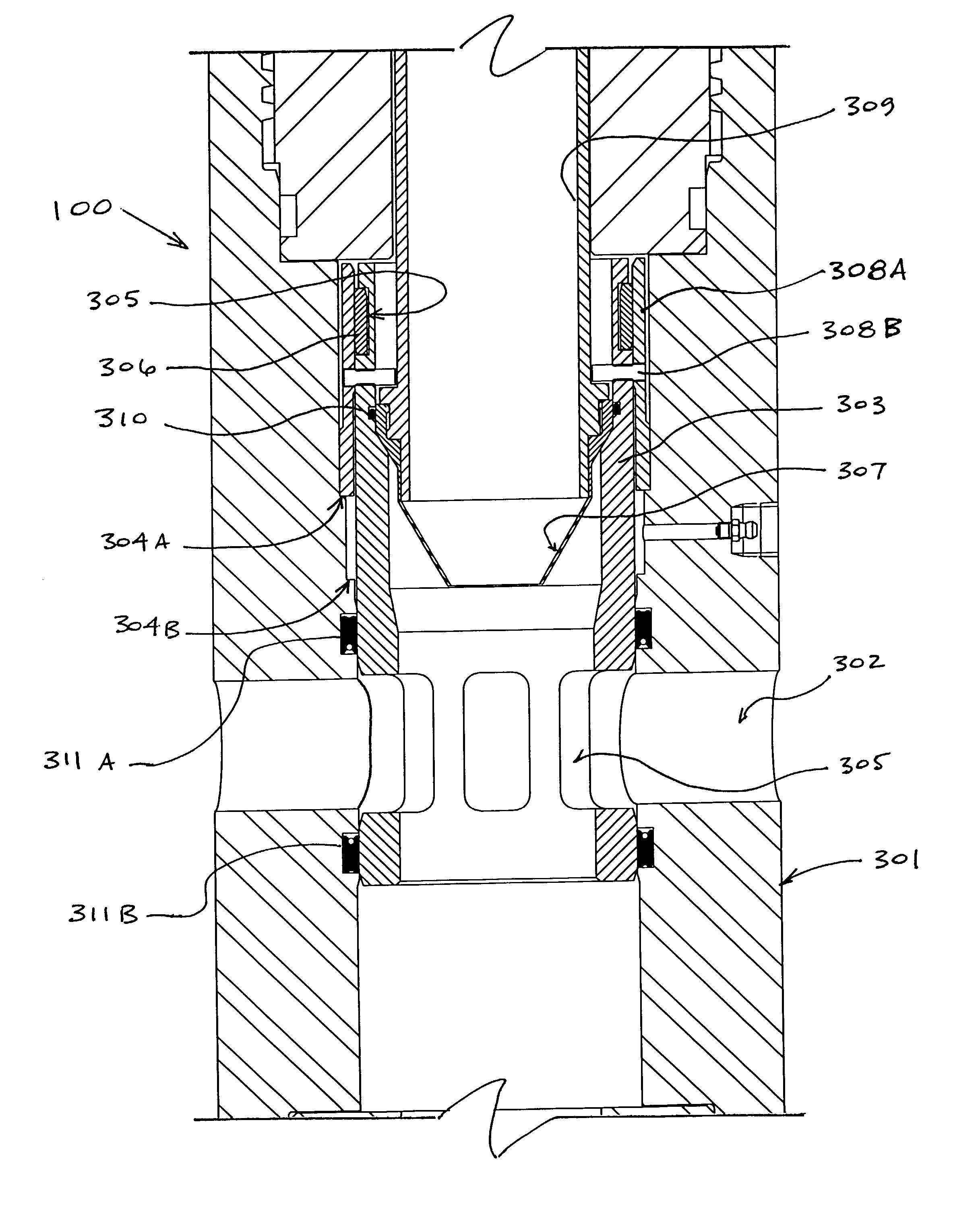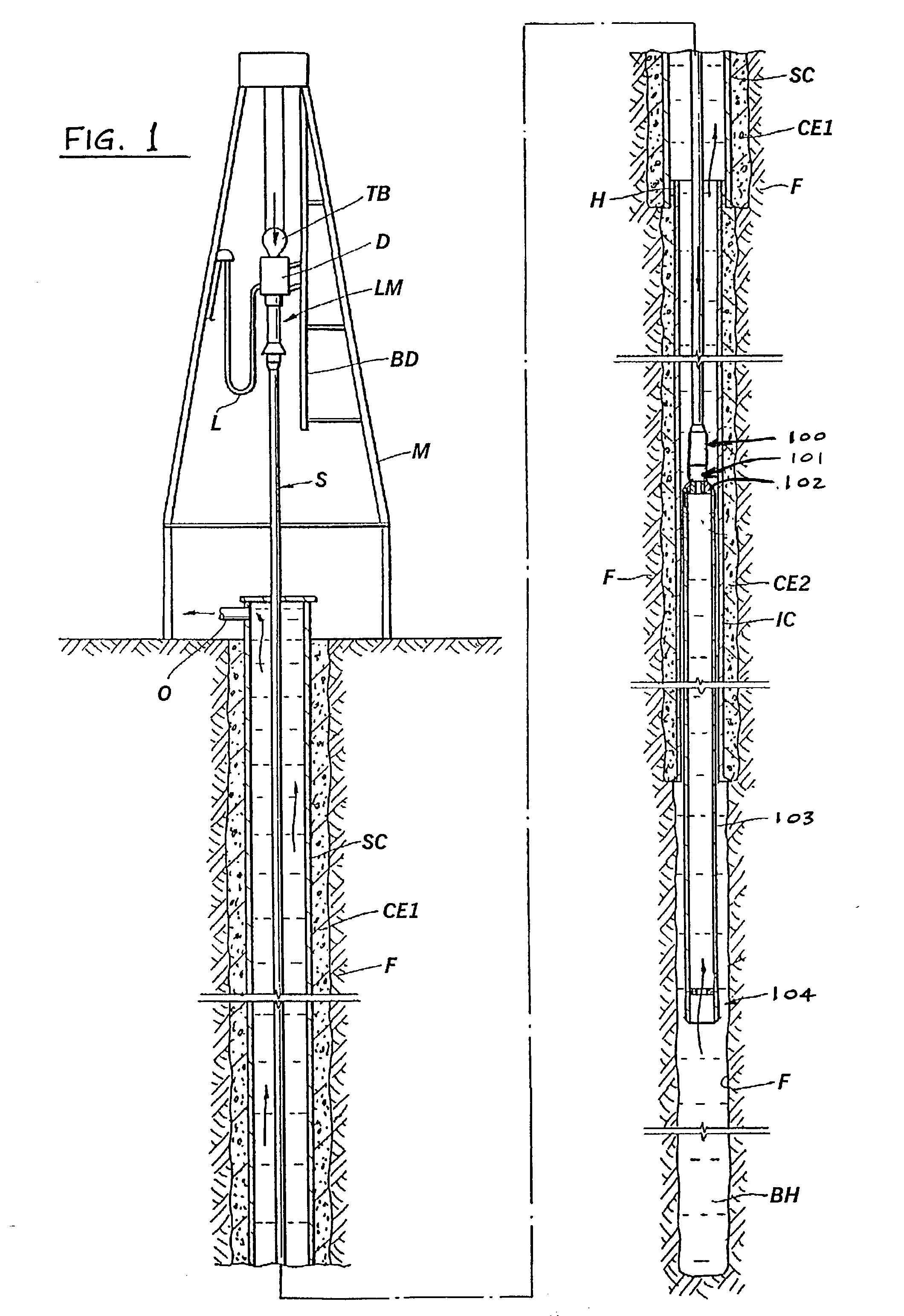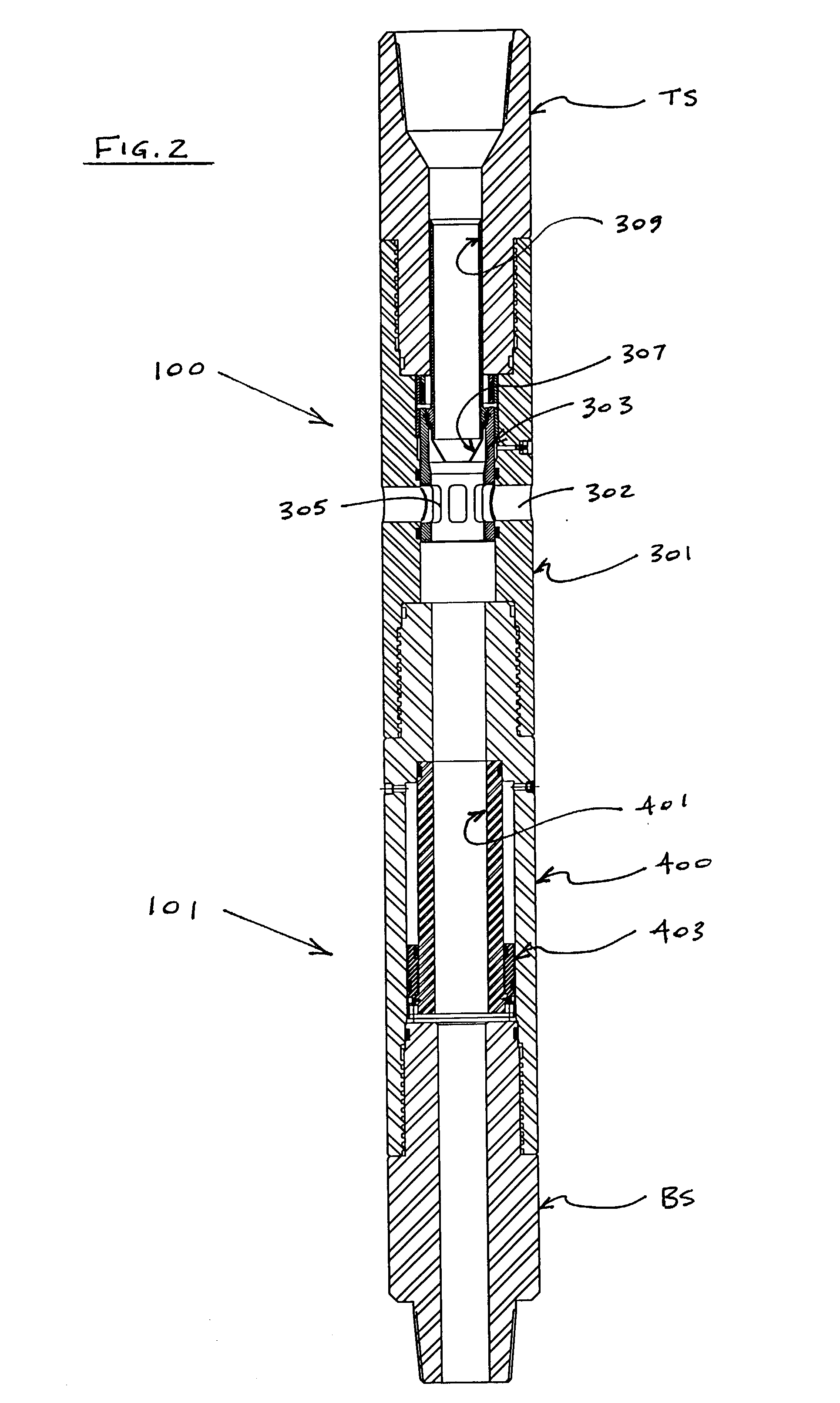Downhole surge reduction method and apparatus
a surge reduction and surge technology, applied in the direction of drilling casings, drilling pipes, borehole/well accessories, etc., can solve the problems of not being able to perform circulation operations, cementing operations cannot be performed at total depth, and the sliding sleeve cannot be moved downwards into the closed port position
- Summary
- Abstract
- Description
- Claims
- Application Information
AI Technical Summary
Benefits of technology
Problems solved by technology
Method used
Image
Examples
Embodiment Construction
[0030] In oilfield applications, a "drilling / production liner" and a "sub-sea casing" are tubular members which are run on drill pipe. The term "sub-sea casing" is used with respect to offshore drilling operations, while the term "drilling / production liner" is used with respect to both land and offshore drilling operations. For ease of reference in this specification, the present invention is described with respect to a "drilling / production liner." In the appended claims, the term "tubular member" is intended to embrace either a "drilling / production liner" or a "sub-sea casing." In the specification and appended claims, the term "operatively connected" is used to mean "in direct connection with" or "in connection with via another element," and the term "set" is used to mean "one or more."
[0031] A description of a preferred embodiment of the present invention is provided to facilitate an understanding of the invention. This description is intended to be illustrative and not limiting ...
PUM
 Login to View More
Login to View More Abstract
Description
Claims
Application Information
 Login to View More
Login to View More - R&D
- Intellectual Property
- Life Sciences
- Materials
- Tech Scout
- Unparalleled Data Quality
- Higher Quality Content
- 60% Fewer Hallucinations
Browse by: Latest US Patents, China's latest patents, Technical Efficacy Thesaurus, Application Domain, Technology Topic, Popular Technical Reports.
© 2025 PatSnap. All rights reserved.Legal|Privacy policy|Modern Slavery Act Transparency Statement|Sitemap|About US| Contact US: help@patsnap.com



